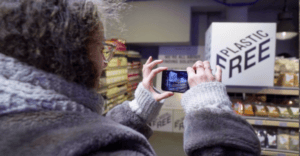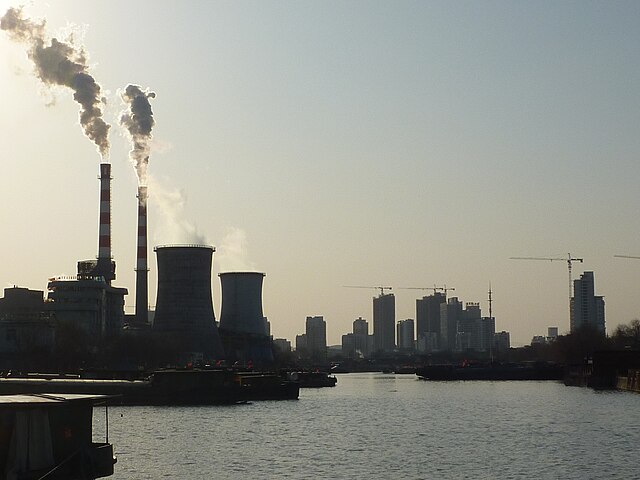Everyone has a view on plastics. They wrap our favourite products, and they’re in our clothes and cars. We come into contact with them hundreds of times every day. We seemingly have no choice but to accept our world is literally and figuratively made of the stuff.
Is this one of the reasons why we’re sick of it – because we feel we cannot escape it?
Related topics: Charcoal Water Filters Can Reduce Plastic Waste – 30 Day Plastic Challenge – China Plastics Challenge – The Recycled Island Foundation
Plastics are a value chain material. This means that, before they reach consumers, they are handled by a long list of different businesses, all of whom have a specific role to play. For many years this worked in a very linear and traditionally commercial way, but right now, every link in the value chain is being tested. The way we produce, use, dispose of and recycle plastic products is now at the forefront of public consciousness.
A material that promised so much has undoubtedly lost its way. Is there any hope that it can redeem itself? Will we ever solve the plastics problem?

Context
Firstly, let’s look at the “problem.” The first thing that strikes you is that there isn’t one thing that’s wrong. There’s a series of small, yet significant, faultlines in the way plastics are handled.
At the beginning is the oil and chemical industry– big suppliers of “feedstock” to polymer producers, who turn oil into plastics. These supply converters, who make plastic products like bottles and bags from plastic resins, then help brand owners and retailers put their products on the market. This is a highly simplified picture of the traditional packaging value chain: many businesses, each supplying each other, and for many years, it all went without a hitch.
Except that it didn’t.
What we now know is that we acted irresponsibly. We hadn’t considered the implications of the end of a product’s life. We were too focused on the benefits of the material up to and during its time in the hands of the consumer and hardly at all afterward. We lost sight of the value of the material – we created a take, make, dispose culture which conditioned society to see plastics as a necessary evil. Instead of being fantastic, plastic was rubbish.
So let’s break down the major elements of the plastics problem and tackle them one by one.
Preventing Leakage of Plastics into the Environment
NGOs are doing a tremendous job highlighting the awful consequences of man’s misuse of plastics. The prediction that, if trends continue, there will be more plastic than fish in our seas by 2050 has entered popular consciousness. Whilst it is a source of frequent guilt for me, as a representative of the plastics industry, I know that plastics could eventually be a climate-positive material.
The plastics industry recognizes that plastics pollution is the most visible and pressing challenge, and it is beginning to raise money to tackle this problem. Brand owners and plastics producers have teamed up to create the Alliance to End Plastic Waste, which will fund projects around the world to ensure that plastic waste does not end up in our oceans or rivers. Members have committed 1.5bn, which will be directed towards projects that promote clean up and the building of waste infrastructure where it is needed. Asia is likely the primary focus of this action.
Clean up initiatives are worthy, and the sums being invested are increasing. However, some already say it is akin to pouring water into a sieve – we will never be able to recover every particle of plastic from the ocean. Whilst remarkable ocean plastic technology is being developed, we must admit that most submerged plastic is probably irretrievable. The reality is we must prevent the material from ending up in the ocean in the first place.
The European Union is backing the Global Plastics Protocol, an idea first floated by the Ellen McArthur Foundation. Legislators want to identify a common set of principles that all nations can adopt which will prevent plastics from ending up in the environment. More details will be available by the end of 2019. The EU has also taken the lead to ban certain single-use plastic applications that were commonly found on Europe’s beaches. Countries around the world are beginning to ban plastic bags, straws, and other commonly littered items.
Improving Recycling Rates
The EU has certainly taken the lead here, adopting legislation that lays down harmonized recycling targets for plastics. The Packaging and Packaging Waste Directive states that 55% of all plastic packaging will be recycled by 2030. In response, the European plastics industry has committed to delivering 10 million tonnes of recyclate by 2025. France, the UK, and the Netherlands hope to introduce the concept of Plastic Pacts, where the Member States ask producers, brand owners, and retailers to make commitments towards improving the recyclability of products – the increased recycling of these products and increased use of recycled plastics.
Beyond Europe, there is less clarity about how the recycling of plastics will increase. The American Chemical Council (ACC) has voluntarily committed itself to 2030 recycling targets. South Korea already achieves far higher recycling rates than many European countries, according to figures from the World Economic Forum. A common global approach is the zero waste concept, which will promote plastic recycling.
What is clear is that recycling rates are often overstated because the definition is open to interpretation. Energy recovery (incineration) is sometimes included in the figures. A global approach is certainly needed to close this loophole and clarify the definition and standards once and for all.
Improving the Uptake of Recyclates
According to a report from the European Commission, the demand for recycled plastic in Europe is expected to total around 5 million tonnes by 2025, well under the aforementioned figure the industry has committed to producing. This is a major problem, as it means that the supply of recycled plastics will outstrip demand, and the secondary material will not be economically viable. This is the first challenge. The second is a technological one: quality. Both the economic and technical issues go hand in hand, but currently, there are no clear answers to either.
Several schemes are being devised to solve this. The first is for legislators to impose mandates on the use of recycled content. By forcing brand owners and retailers to do this, it is hoped that demand will rise. Several countries now say they will do this through Plastic Pacts. The second is to tax the production of primary (virgin) materials. The EU has yet to come forward with a definitive law on this but has opened a consultation around the idea. Greater quality will come with separate collection, better sorting technology and the development of chemical (feedstock) recycling. These initiatives will have to be partly funded by the private sector, but public money has been also set aside.
Transitioning Away from Fossil Feedstock
The issue of fossil feedstock is often overlooked. The plastics sector guzzles around 5-6% of global fossil-fuel output per year, and more than 95% of plastics are derived from cheap and subsidized oil. The increasing use of recyclates will put a dent in that, but with demand for plastics predicted to grow steadily, the use of fossil resources may also rise. Bio-feedstock and CO₂ have the potential to help the industry transition away from its oil dependency, but the move has been slow. The transition is awaiting a definitive nod of approval from legislators who have two things on their mind: the sustainability of bio-based sourcing and the impact on the energy sector, which subsidises the use of biofuels.

In light of this, European Member States are wary of imposing targets on the use of renewable feedstock. The Netherlands and Sweden are keen to promote renewable feedstock – both have strong bio-based sectors. Germany’s packaging law allows for bio-based packaging to be given a reduced waste tariff. The French Energy Transition Law lays down incremental bio-based content targets for some plastic items like bags. Whilst this suggests the signs are good, the idea of codifying Green Public Procurement to drive renewable products has stalled in recent years, and it is unlikely we will make much progress at the EU level in the near future. Many within the industry argue that the market is the best judge, although the bio-based sector often responds that a level playing field with the fossil-fuel industry does not yet exist (those pesky oil subsidies again).
As with other sectors, the application of carbon pricing to the plastic sector or plastic products would be the easiest way to bring lasting positive change.
Compostables and Other “Solutions”
Many NGOs and pressure groups, such as A Plastic Planet, argue vociferously that we use too much plastic and that it is causing substantial environmental damage. A Plastic Planet has launched its Plastic Free labels, which it says gives consumers clear choices if they want to avoid using plastics. There is one problem: compostable plastic (EN13432) materials are allowed by the label, meaning that biodegradable polymers are using it. It prompts the question: when is a plastic not a plastic?
Compostables are often described as the alternative to plastic, and they certainly can help in products designed to break down in this way. The value of biodegradable materials lies in its functional properties and its ability to terminate itself, i.e. such materials are often only designed to fulfill one short iteration. Producers of these materials should not be confused with those of oxo-degradables (additives added to conventionally non-compostable plastics in order to make them copy the degradation process). The problem is oxo-degradables are a false solution, and the EU has banned them.
Whilst compostable plastics are often defined as promoting “organic recycling,” they are about as far away from the generally agreed definition of recycling as it is possible to get. Don’t get me wrong, I understand that there are applications which suit biodegradation. But recycling as a concept is predicated on retaining the essential value of a material. Composting a plastic produces no material value – it is lost as it dissolves into water and gas. This is why you can hear laughter from the back of the room when producers of compostables argue that mechanical recycling doesn’t work – they are being a tad hypocritical.
A huge amount of disagreement exists on the future for waste plastics. Because a wide variety of plastics exists and all demand specific treatment when they enter the waste phase, it is difficult to generalize. The easiest way is to take an economic approach by considering which plastics are most likely to internalize their external and waste costs. The focus should be on PET, PE, and PP – the three most widely used plastics, used for bottling and packaging.
The advantage of the economic approach is that they are drop-in solutions which require little investment in new technology. The problem with the economic approach is that it is likely to stifle innovation and perhaps prevent better solutions from entering the market. Much of the debate around compostables resolves around this conundrum. Because the market volumes of compostables are relatively small, they are seen as a nuisance by recyclers who claim they could contaminate drop-in waste streams. On the flip side, there is undoubtedly a role that compostables can play, and where possible, we should not artificially skew the market against them.
Editor’s Pick – Related Articles:
 “Hungry for data, starving the world”
“Hungry for data, starving the world”
 “The Cubans who taught us about clean energy”
“The Cubans who taught us about clean energy”
Conclusion
So, here we are. The changes that the plastics industry requires to transition from a linear to a circular economy are manifold, complex, and reliant on cross-sectoral cooperation. All this must be underpinned by progressive legislation and depends on the goodwill of consumers. As always, the good solutions will rise to the top, and the most sustainable brands will lead the way.
I believe in plastics. They help us in every aspect of our lives, but they undoubtedly present a thoroughly modern conundrum. They have freed us and enslaved us. They have saved us and trapped us. They showcase the most innovative side of humanity but are also a symbol of our greed and arrogance.
Plastics must change, but that will only happen when we change too.
EDITOR’S NOTE: The opinions expressed here by Impakter.com columnists are their own, not those of Impakter.com.

















